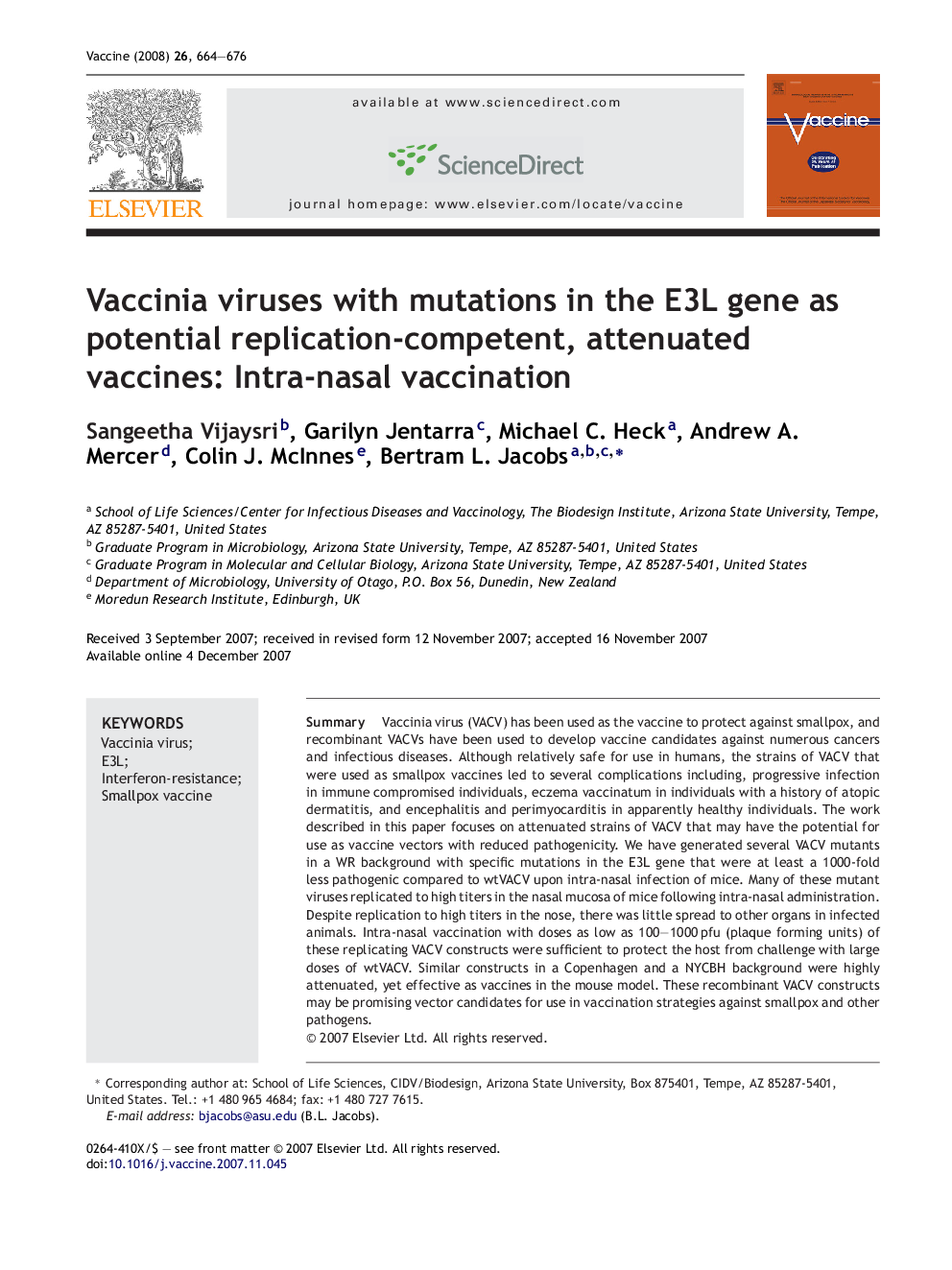| Article ID | Journal | Published Year | Pages | File Type |
|---|---|---|---|---|
| 2406146 | Vaccine | 2008 | 13 Pages |
SummaryVaccinia virus (VACV) has been used as the vaccine to protect against smallpox, and recombinant VACVs have been used to develop vaccine candidates against numerous cancers and infectious diseases. Although relatively safe for use in humans, the strains of VACV that were used as smallpox vaccines led to several complications including, progressive infection in immune compromised individuals, eczema vaccinatum in individuals with a history of atopic dermatitis, and encephalitis and perimyocarditis in apparently healthy individuals. The work described in this paper focuses on attenuated strains of VACV that may have the potential for use as vaccine vectors with reduced pathogenicity. We have generated several VACV mutants in a WR background with specific mutations in the E3L gene that were at least a 1000-fold less pathogenic compared to wtVACV upon intra-nasal infection of mice. Many of these mutant viruses replicated to high titers in the nasal mucosa of mice following intra-nasal administration. Despite replication to high titers in the nose, there was little spread to other organs in infected animals. Intra-nasal vaccination with doses as low as 100–1000 pfu (plaque forming units) of these replicating VACV constructs were sufficient to protect the host from challenge with large doses of wtVACV. Similar constructs in a Copenhagen and a NYCBH background were highly attenuated, yet effective as vaccines in the mouse model. These recombinant VACV constructs may be promising vector candidates for use in vaccination strategies against smallpox and other pathogens.
